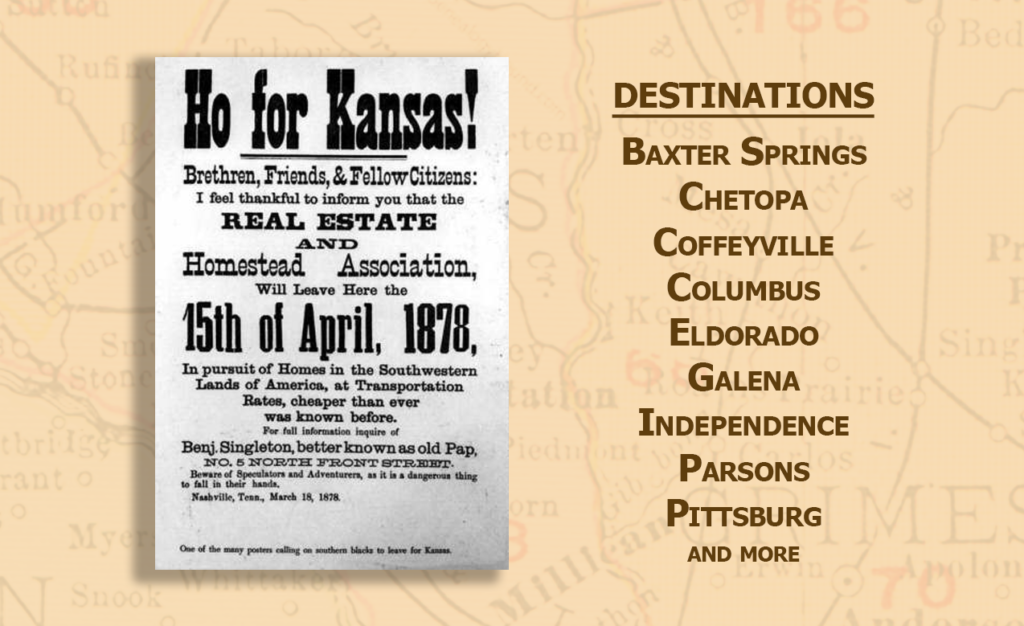The Binkleys and Benjamin “Pap” Singleton
While the Curtises headed north to Kansas from Texas, the Binkleys headed west from Tennessee. Of course, we know they meet up later, either in Baxter Springs or Columbus Kansas, sometime around 1880.
The handbill in the featured image above shows that they would be leaving for Kansas on April 15, 1878. We do not know if our ancestors were part of this particular journey. There were several others.
For Tennesseans it was pretty much a straight show west, although we aren’t sure whether or not a water crossing was involved at some point. They would end up in Baxter Springs and spread out to other areas in Kansas over time.
The link between the Binkleys and “Pap” Singleton (more on Singleton below) centers around the fact that Singleton was born in Nashville, TN where the Binkley’s were enslaved. No doubt, given his presence both literal and figurative they knew of him and very likely became part of the mass exodus to places in Kansas headed up by Singleton.
After arriving in Kansas, in 1880, Carl Binkley and his first wife Sarah Binkley, acquired 160 acres of land. Based on the little we know we do believe it came from the Kansas City, Fort Scott & Gulf Railroad Company (click here to see transcribed deed record). Carl Binkley served in the Civil War, Company C of the 12th Regiment of Tennessee Volunteers, so perhaps that may have gotten him a larger parcel of land.
About Benjamin “Pap” Singleton from Kansas State Historical Society
Here is an excerpt:
Benjamin “Pap” Singleton
Father of the African American exodus. Born: 1809, Nashville, Tennessee. Died: February 17, 1900, in Kansas City, Missouri.
He was born a slave in 1809, but after 37 years of bondage Benjamin Singleton escaped to freedom. He made Detroit his home and operated a secret boardinghouse for other escaped slaves. Following emancipation, Singleton returned to his native Tennessee.
After the Civil War, African Americans in the South enjoyed the rights and privileges of American citizenship. But when the federal troops were removed, their rights were no longer secure. The Ku Klux Klan emerged to strike terror and death to Blacks who refused to submit to their will. A sharecropping system virtually re-enslaved Black tenant farmers.
Because Kansas was famous for John Brown’s efforts and its struggle against slavery, Singleton considered the state a new Canaan, and he, like a “Black Moses,” would lead his people to the promised land. Singleton traveled through the South organizing parties to colonize in Kansas. Singleton distributed promotional posters and handbills which touted “Sunny Kansas” as “one of the finest countries for a poor man in the world,” with “plenty of stone and water, and wood on the streams.” One poster described, “large tracts of land, peaceful homes and firesides, undisturbed by any one.”
Between 1877 and 1879 nearly 300 African Americans followed him to Kansas. Some lived in “Singleton’s Colony” in Cherokee County. Others settled in Wyandotte, in Topeka’s Tennessee Town, and in Dunlap Colony near present Emporia. Singleton advocated the organized colonization of blacks in communities in Kansas and testified about the “Exodusters” before a committee of the U.S. Congress in 1880.


